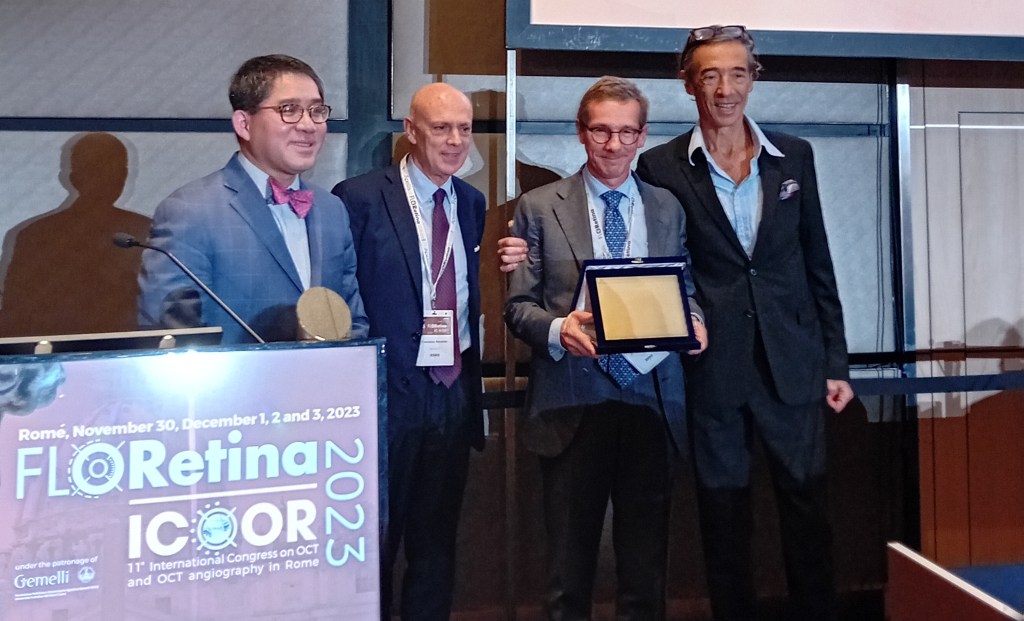Raphael Kilian MD
Department of Ophthalmology, Ospedali Privati Forlì “Villa Igea,” Forlì, Italy
The 2023 BRUNO LUMBROSO, MD LECTURESHIP award went to Professor Giovanni Staurenghi, Chairman of the Department of Ophthalmology at the University of Milano – Luigi Sacco Hospital, Italy. His talk was entitled, “OCT: Past and Future.“ He summarized key milestones in the development of OCT and discussed areas that can still be improved.

While fluorescein angiography was introduced in the 1960s, time domain optical coherence tomography (OCT) came about in the early 1990s with the first live image taken in 1993. From that moment on, OCT technology has continued to evolve. Spectral domain OCT was introduced in 2006, swept source in 2012, OCT angiography (OCT-A) in 2014, and high-resolution OCT in 2022.
As with any new technology, hurdles had to be overcome. Since different machines used different image-analysis techniques, one of the first problems that had to be addressed was the comparison between measurements taken on different devices. After that, it became evident that a common nomenclature was needed in order for the scientific community to compare results across studies. In this context, many societies and expert meetings, such as the International Vitreomacular Traction Study Group and the Classification of Atrophy Meeting, were established.
As the technology continued to evolve, new challenges arose. For instance, the distance between each B-scan section may vary by machine, which leads to heterogeneity in the ability to detect disease. Second, fixed-segmentation methods may miss key disease details or even miss the main pathology. With regards to OCT-A, one issue is that it is not able to detect slow blood flow. This issue may bias its ability to detect key features of certain vascular diseases. Additionally, OCT-A is affected by projection artifacts and unable to detect flow direction. As such, fluorescein angiography, which does not have these limitations, still has a role in the diagnosis and care of patients.
Finally, the latest generation of high-resolution OCTs have image resolution like never before. Using these devices, one is now able to visualize new physiological and pathological anatomical features allowing for the study of novel potential disease biomarkers. The newer devices are even able to detect intravascular blood perfusion and delineate blood vessels more effectively than adaptive optics technologies.
In conclusion, even with the challenges of the past and the current limitations, OCT has had an astonishingly rapid evolution and an impact on our patients and how we practice medicine.